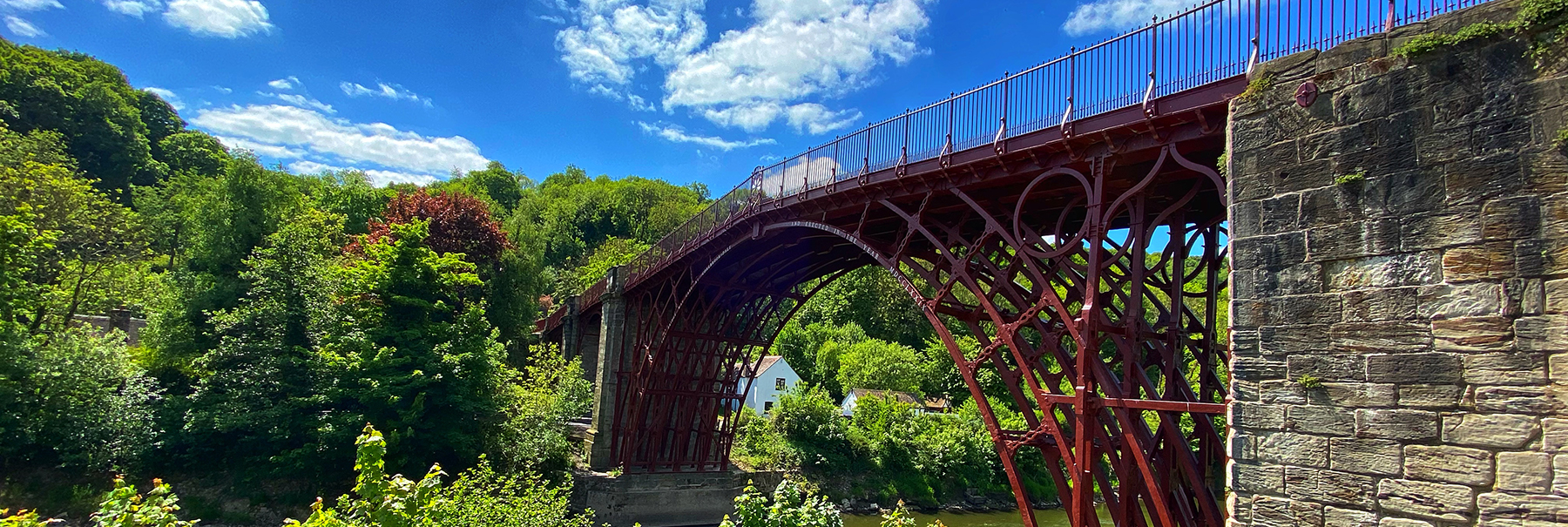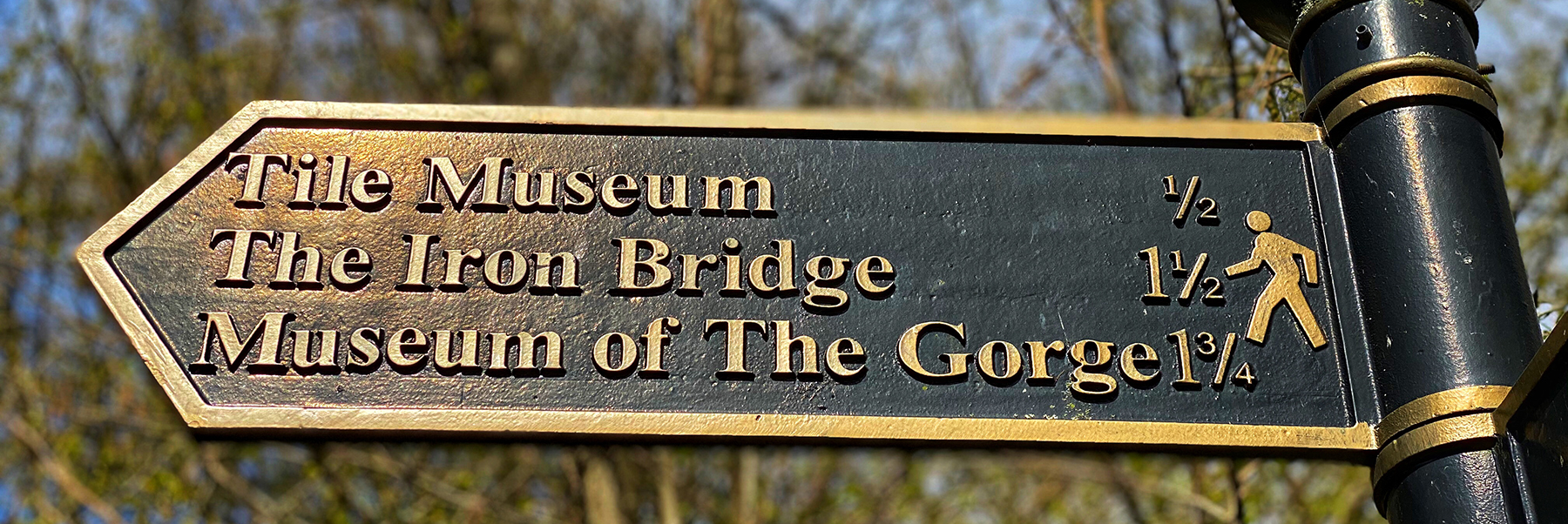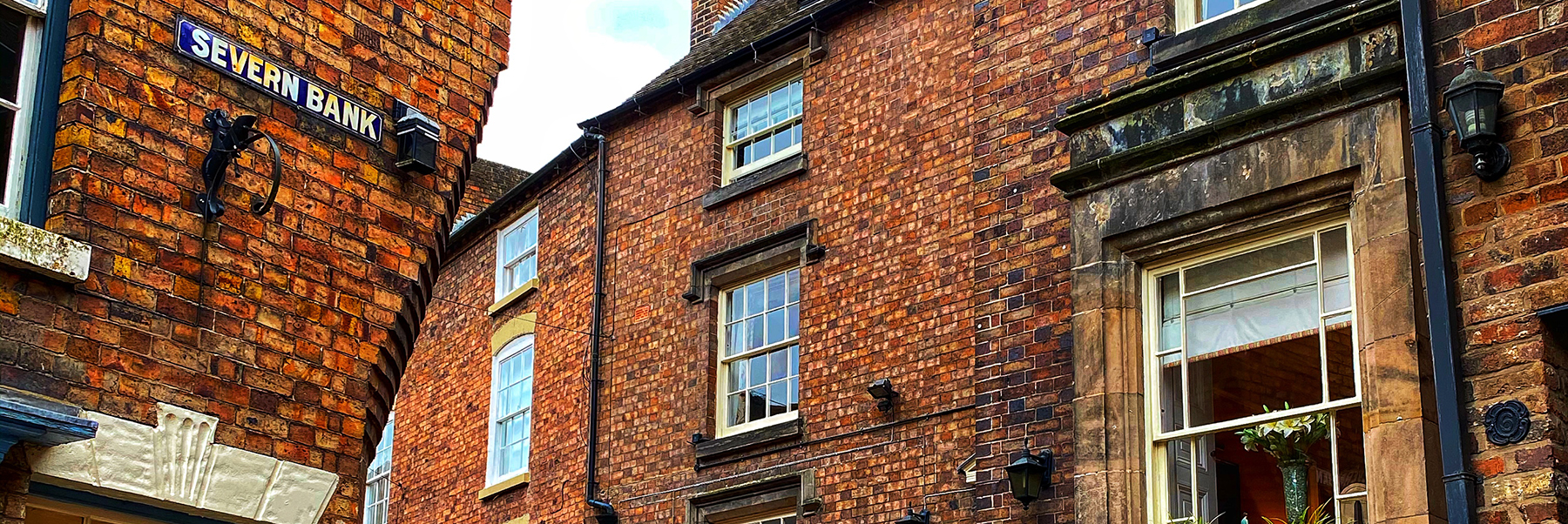World Heritage Site
One of Shropshire’s top attractions Ironbridge is known throughout the world as the symbol of the Industrial Revolution. It contains all the elements of progress that contributed to the rapid development of this industrial region in the 18th century, from the mines themselves to the railway lines. Nearby, the blast furnace of Coalbrookdale, built in 1708, is a reminder of the discovery of coke. The bridge at Ironbridge, the world's first bridge constructed of iron, had a considerable influence on developments in the fields of technology and architecture.
Today, the site is a living, working community with a population of approximately 4000 people as well as a world-renowned place to visit. It is also a historic landscape that is interpreted and made accessible through the work of a number of organisations, in particular, the Ironbridge Gorge Museum Trust (established in 1967 to preserve and interpret the remains of the Industrial Revolution within the Ironbridge Gorge) and the Severn Gorge Countryside Trust (established in 1991 to manage the woodland, grassland and associated historic structures in the Gorge).
Within the area five features are highlighted as of particular interest. It was in Coalbrookdale in 1709 that the Quaker Abraham Darby I developed the production technique of smelting iron with coke which began the great 18th century iron revolution. There still remains a high concentration of 18th and 19th century dwellings, warehouses and public buildings in Coalbrookdale. In Ironbridge, the community draws its name from the famous Iron Bridge erected in 1779 by Abraham Darby III. At the eastern end of Ironbridge stand the remains of two 18th century blast furnaces, the Bedlam Furnaces, built in 1757. In Hay Brook Valley, south of Madeley, lies a large open-air museum which incorporates the remains of the former Blists Hill blast furnaces and Blists Hill brick and tile works. Also of importance is the spectacular Hay Inclined Plane, which connected the Shropshire Canal to the Coalport Canal, which in turn linked with the River Severn. The small community of Jackfield on the south bank of the River Severn was important for navigation, coal mining, clay production, and the manufacture of decorative tiles. Located at the eastern end of the property and on the north bank of the River Severn, industrialisation came to Coalport in the late 18th century and the area is remembered principally for the Coalport China Works.
But please do not be deceived by our heritage. Nowadays the area is far from industrial. Although the revolution started here, most of the factories are long gone and the natural beauty of the Gorge has been restored.
Many of our visitors are attracted to the superb Victorian themed museums operated by the Ironbridge Gorge Museum Trust.
However, the Gorge is a splendid attraction in its own right. Nature has reclaimed most of the former industrial sites, leaving us with a unique and beautiful wooded valley. The gorge is a now a maze of footpaths, bridleways, and country lanes.
The former homes of the Victorian Iron Master’s and their workers can still be found in the communities around the Gorge. But no longer will you find the grimy back streets, or rows of chimneys belching back smoke. Nowadays the old homes are set in the picturesque villages and hamlets dotted across the valley.



























